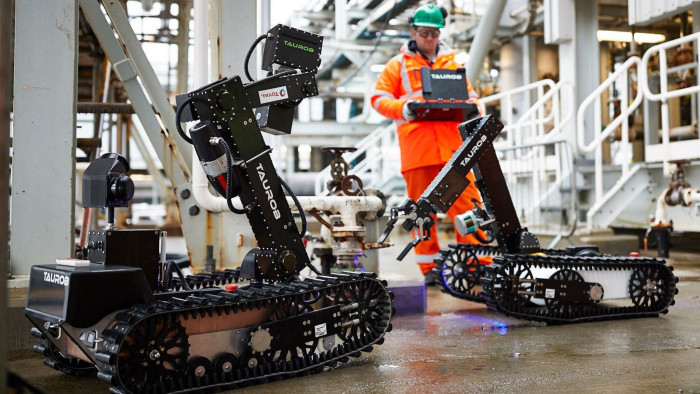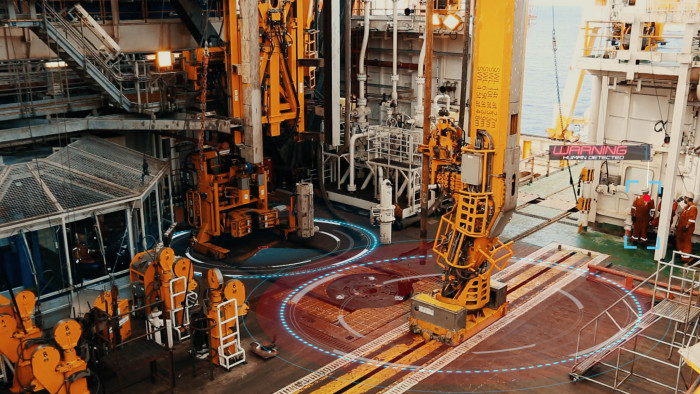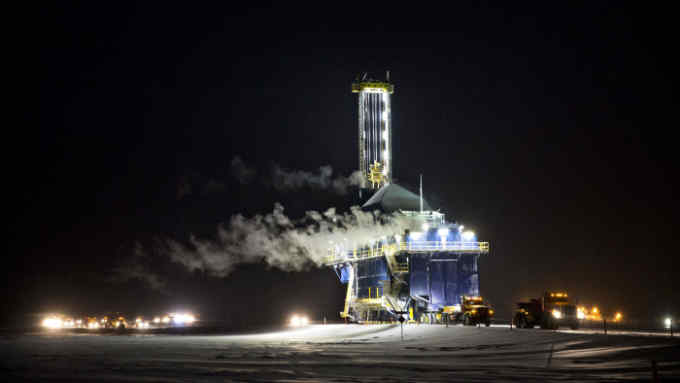Oil rig tragedy leads to improved safety as robots step into breach

Simply sign up to the Oil & Gas industry myFT Digest -- delivered directly to your inbox.
The red zone of an oil rig’s drill floor — where humans and moving equipment interact, sometimes with horrifying consequences — is among the most dangerous workplaces on earth.
In 2017, the US Bureau of Safety and Environmental Enforcement issued an alert to rig operators in the Gulf of Mexico about the correct management of these hazardous zones, one week after a worker was crushed to death in a red zone on the Petrobras 10,000 Drillship, a mobile rig.
Although deepwater drilling contractor Seadrill was not involved in any way, the incident prompted it to look again at its own red zones. Richard McConomy, performance enhancement manager at Seadrill, says the accident triggered a search for technologies that could help it perform its work more accurately.
Working in Houston with the Marsden Group, a technology company specialising in heavy industry, the team came up with the idea to use Lidar, a sensing method more associated with autonomous vehicles than drill floors.
Lidar, an acronym that stands for light detection and ranging, measures distance by illuminating a target with a laser and measuring the reflected light. Long used in atmospheric research and meteorology, the technology now serves as the eyes of smart cars, helping to detect obstacles and avoid collisions.
In Seadrill’s new Vision IQ system, Lidar combines with artificial intelligence to dynamically monitor red zone movement by humans and machines. It enables the driller in a cabin above the drill floor to know the exact position of workers and how near they are to moving equipment. When it detects a risky situation, an alarm is sounded to alert the driller, enabling them to stop operations.

The next phase in Vision IQ’s development will see it integrated directly into the machinery, creating an anti-collision system that can automatically slow down or stop equipment when a risk is detected, says Mr McConomy.
“What Lidar gives us over standard cameras is pinpoint accuracy over where a worker is and where a piece of machinery is located. It is incredibly precise, down to the micro-millimetre,” he explains. “AI can rapidly calculate the path that each of them is on, and the likelihood of collision, so that preventive measures can be taken.”
Vision IQ has already been run as a proof of concept on two drillships in the Gulf of Mexico. Pending certification from regulators, it will be rolled out across 12 Seadrill drillships over the next nine months.
While some human activity may always be necessary in oil-rig red zones, the focus elsewhere in the industry is on removing humans and sending in robots.
In October, the non-profit Oil & Gas Technology Centre (OGTC) in Aberdeen in Scotland, announced the next phase in its autonomous robots project with Total of France, which is developing what it calls the world’s first offshore work-class robot.
The first phase of the work saw Austrian firm Taurob create a robot to conduct visual inspections at Total’s Shetland gas plant and the Alwyn gas platform in the North Sea. A second-generation version will have a stronger chassis and a heavy-duty arm that will lift objects and turn valves. It will be tested by Total and Equinor of Norway, the research initiative’s new partner.
“A lot of our work on hazardous environments focuses on whether we can avoid sending people into those areas in the first place,” says Stephen Ashley, head of OGTC’s digital transformation solution centre.
He sees “huge potential” in using robotic crawlers and drones for routine inspections. Such technologies in the industry would lead not only to better safety but operational efficiencies, since equipment often has to be shut down before a human worker can look at it.
These inspections may offer far more information, too, according to Morag Watson, chief digital innovation officer at BP: “When we look at the kind of payload that a drone can carry now, for example, we see the emergence of hyperspectral cameras that can detect things that the human eye simply can’t see, such as gas clouds from leakages.”
“Digital technologies increasingly enable us to perform tasks in entirely new ways, and often far better, more accurate ways. Having workers in hazardous conditions will eventually become the exception, and only in unavoidable situations, rather than the norm.”

Comments